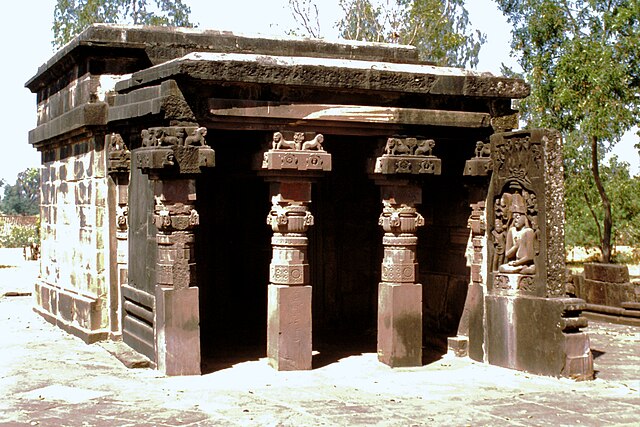Kirtimukha is the name of a swallowing fierce monster face with huge fangs, and gaping mouth, very common in the iconography of Hindu temple architecture in Nepal, India and Southeast Asia, and often also found in Buddhist architecture.
Kirtimukha at Kasivisvesvara Temple at Lakkundi, Gadag district, Karnataka, India
Mandir Kalasa and Kirtimukha ("glorious face").
Kirtimukha above a Hindu temple entrance in Kathmandu, Nepal
Kirtimukha at Amruteshvara temple in Annigeri, Dharwad district, Karnataka state, India
Hindu temple architecture
Hindu temple architecture as the main form of Hindu architecture has many varieties of style, though the basic nature of the Hindu temple remains the same, with the essential feature an inner sanctum, the garbha griha or womb-chamber, where the primary Murti or the image of a deity is housed in a simple bare cell. For rituals and prayers, this chamber frequently has an open space that can be moved in a clockwise direction. There are frequently additional buildings and structures in the vicinity of this chamber, with the largest ones covering several acres. On the exterior, the garbhagriha is crowned by a tower-like shikhara, also called the vimana in the south. The shrine building often includes an circumambulatory passage for parikrama, a mandapa congregation hall, and sometimes an antarala antechamber and porch between garbhagriha and mandapa. In addition to other small temples in the compound, there may be additional mandapas or buildings that are either connected or separate from the larger temples.

Architecture of a Hindu temple (Nagara style). These core elements are evidenced in the oldest surviving 5th–6th century CE temples.
Initial excavations
Elliptic plan of the Temple
Kankali Devi temple in Tigawa, 5th century








